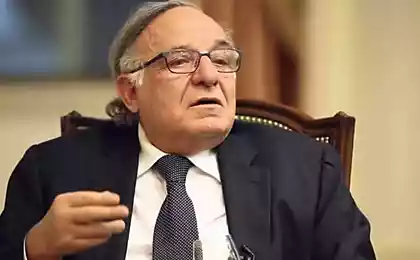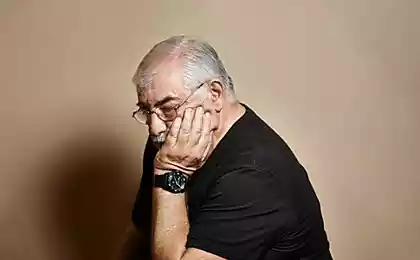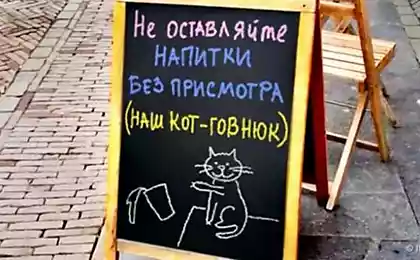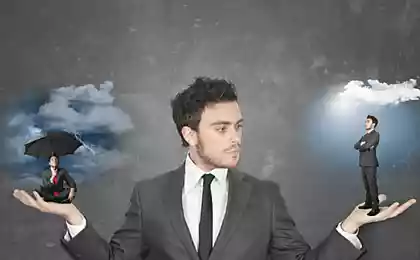1112
Scam geniuses
Our top is headed by Count Victor Lustig, who forever wrote his name in history as the man who sold the Eiffel Tower.
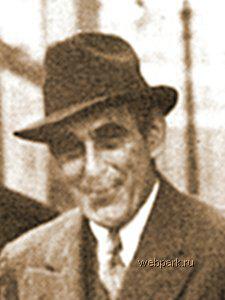
1. Victor Lustig (1890-1947) – the man who sold the Eiffel Tower
Lustig is considered one of the most talented scammers ever to live. He endlessly invented scams, had 45 pseudonyms and was fluent in five languages. Only in the United States, Lustig was arrested 50 times, but for lack of evidence was released each time. Before the outbreak of World War I, Lustig specialized in organizing fraudulent lotteries on transatlantic cruises. He moved to the United States in the 1920s, and in just a couple of years defrauded banks and individuals for tens of thousands of dollars.
Lustig’s biggest scam was the sale of the Eiffel Tower. In May 1925, Lustig arrived in Paris in search of adventure. In a French newspaper, Lustig read that the famous tower was dilapidated and in need of repair. Lustig decided to take advantage of it. The fraudster made a fake credentials, in which he called himself deputy head of the Ministry of Posts and Telegraphs, and then sent official letters to six dealers.
Lustig invited the businessmen to an expensive hotel, where he was staying, and said that since the cost of the tower was unreasonably huge, the government decided to demolish it and sell it for scrap at a closed auction. Allegedly, in order not to cause outrage to the public, who had time to love the tower, Lustig persuaded businessmen to keep everything secret. After some time, he sold the right to dispose of the tower to André Poisson and fled to Vienna with a suitcase of cash. Poisson, not wanting to look like a fool, concealed the fact of deception. After some time, Lustig returned to Paris and sold the tower again. However, this time he was unlucky, as the defrauded businessman reported to the police. Lustig was forced to flee to the United States.
In December 1935, Lustig was arrested and put on trial. He received 15 years in prison for counterfeiting dollars, as well as another 5 years for escaping from another prison a month before sentencing. He died of pneumonia in 1947 in the famous Alcatraz prison near San Francisco.

2. Frank Abegnale, “Catch Me If You Can”
Frank William Abegnale Jr. (born April 27, 1948) became one of the most successful bank robbers in US history at the age of 17. This story happened in the 1960s. Forged bank checks Abegnale stole from banks about $ 5 million. He also made countless flights around the world using forged documents.
Later, Frank successfully played the role of a pediatrician for 11 months in a hospital in Georgia, after which, after forging a diploma from Harvard University, he got a job in the office of the Attorney General of Louisiana.
For more than 5 years, Abegnale changed about 8 professions, he also continued to enthusiastically forge checks and receive money - banks in 26 countries suffered from the actions of the fraudster. The young man spent money on dinners in expensive restaurants, buying clothes of prestigious brands and dates with girls.

The story of Frank Abegnale was the basis of the film “Catch Me If You Can”, where the witty fraudster was played by Leonardo DiCaprio.

3. Christopher Rockancourt is a fake Rockefeller
In 2001, the Canadian police arrested a fraudster of French origin, who pulled a series of grandiose scams. Christopher Rockancourt, who was born in 1967, claimed to be a personal friend of Bill Clinton and a member of the Rockefeller family.
Rocancourt was arrested along with his wife, former Playboy model Maria Pia Ryes. The woman was charged with cheating and deliberate deception for selfish purposes of a Vancouver businessman at a prestigious ski resort located in Whistler, a favorite holiday destination for wealthy tourists from Europe and the United States.
According to police, Rocancourt fled to Canada after being arrested in East Hampton, New York, in August 2000. Then he was accused of skillfully misleading dozens of wealthy Americans and luring them almost $ 1 million.
The criminal openly advertised himself in the media under the name Christopher Rockefeller. In fact, his mother was a prostitute, and his father was an alcoholic - at the age of 5, his parents gave Christopher to an orphanage.
When the fraud was discovered in the US, the crook had to flee to Canada. Employees at the Whistler hotel told police that Rocancourt was a famous international racing driver who, in order to avoid the annoying attention of fans, had to live under an assumed name. One of the victims claimed that the scammer also posed as a powerful financier. It is known that other people he introduced himself as a boxing champion, he also portrayed a film producer. For a while, the impostor was friends with Mickey Rourke.
In March 2002, Rocancourt was extradited to the United States. He pleaded guilty to 3 of the 11 counts, including theft, smuggling, bribery and perjury. He admitted that he cheated wealthy citizens for $ 40 million.

4. Ferdinand Demara, The Great Impostor
Ferdinand Waldo Demara (1921-1982), known under the nickname "The Great Impostor", during his life with great success played people of a large number of professions and occupations - from a monk and surgeon to a prison chief. In 1941, he went to serve in the U.S. Army, where for the first time began life under a new guise, giving the name of his friend. After that, Demara posed as other people many times. He didn’t even finish high school, but each time he faked his education papers to play another role.
During his fraudulent career, Demara has served as a civil engineer, deputy sheriff, prison chief, psychology doctor, lawyer, child protection expert, Benedictine monk, editor, cancer specialist, surgeon and teacher. Surprisingly, in no case did he seek much material gain, it seemed that Demar was interested only in social status. He died in 1982. About the life of Ferdinand Demara written a book and filmed.

5. David Hampton (1964–2003) was an African-American fraudster. He posed as the son of black actor and director Sidney Poitier. Hampton initially introduced himself as David Poitier to dine in restaurants for free. Later, realizing that he was trusted and could influence people, Hampton persuaded him to give him money or shelter to many celebrities, including Melanie Griffith and Calvin Klein.
Hampton told some people that he was a friend of their children, others that he had missed a plane in Los Angeles and that his luggage had left without him, and others that he had been robbed.
In 1983, Hampton was arrested and charged with fraud. The court sentenced him to pay compensation to victims in the amount of $ 4,490. David Hampton died of AIDS in 2003.

6. Milli Vanilli, a duo who couldn't sing
In the 90s, a scandal broke out associated with the popular German duo Milli Vanilli - it turned out that the voices of other people are not the members of the duo on the studio recordings. As a result, the duo was forced to return the Grammy Award in 1990.
The duo Milli Vanilli was formed in the 1980s. The popularity of Rob Pilatus and Fabrice Morvan began to grow rapidly, and in 1990 they won the prestigious Grammy award.
In 1998, one of the duo members, Rob Pilatus, died of a drug and alcohol overdose at the age of 32. Morvan tried unsuccessfully to pursue a musical career. Milli Vanilli sold 8 million singles and 14 million records.

7. Cassie Chadwick, the illegitimate daughter of Andrew Carnegie
Cassie Chadwick (1857-1907), née Elizabeth Beagley, was first arrested in Ontario at the age of 22 for forgery of a bank check, but was released because she was faking mental illness.
In 1882, Elizabeth married Wallace Springsteen, but her husband left her after 11 days when he learned about her past. Then in Cleveland, a woman married Dr. Chadwick.
In 1897, Cassie organized her most successful scam. She described herself as the illegitimate daughter of a steelworker originally from Scotland by Andrew Carnegie.
rich dad Elizabeth...
Thanks to a fake bill worth $2 million, allegedly issued by her father, Cassie received loans from various banks totaling between $10 million and $20 million. In the end, the police asked Carnegie whether he knew the fraudster, and after his negative answer arrested Mrs. Chadwick.
Cassie Chadwick appeared in court on March 6, 1905. She was found guilty of 9 major frauds. Sentenced to ten years, Mrs Chadwick died in prison two years later.

8. Mary Baker as Princess Karabu
In 1817, a young woman appeared in Gloucestershire in exotic clothes with a turban on her head, who spoke an unknown language. Locals appealed to many foreigners to identify the language until a Portuguese sailor translated its history. The woman was supposedly a princess of Karabu from an island in the Indian Ocean.
According to the stranger, she was captured by pirates, the ship crashed, but she managed to escape. For the next ten weeks, the stranger was in the public spotlight. She dressed up in exotic clothes, climbed trees, hummed strange words and even swam naked.
Soon, however, a certain Mrs. Neal identified "Princess Karab." The island impostor was the daughter of a shoemaker named Mary Baker. As it turned out, working as a maid in Mrs. Neal's house, Mary Baker entertained the children with the language she had invented. Mary had to admit to cheating. At the end of her life, she sold leeches at a hospital in England.
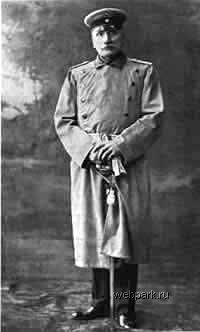
9. Wilhelm Voigt as Captain Kepenika
Wilhelm Voigt (1849-1922) was a German shoemaker who pretended to be a Prussian captain. On October 16, 1906, in the southeastern suburb of Berlin, Köpenike, unemployed Wilhelm Voigt rented a Prussian captain’s uniform in the city of Potsdam and organized the capture of the town hall.
Voigt ordered four unknown grenadiers and a sergeant, who were accidentally stopped on the street, to arrest the burgomaster Kopenik and the treasurer, after which he alone seized the local town hall without any resistance, and then confiscated the city treasury - 4,000 marks and 70 pfennigs. And all his orders and soldiers, and the mayor himself carried out unquestioningly.
Taking the money and ordering the soldiers to stay in their seats for half an hour, Voigt left for the station. On the train, he dressed in civilian clothes and tried to escape. Voigt was eventually arrested and sentenced to four years in prison for his raid and stealing money. In 1908 he was released early on the personal orders of the Kaiser of Germany.
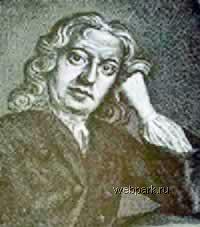
10. George Psalmanasar, First Witness to Formosa Aboriginal Culture
George Psalmanasar (1679–1763) claimed to be the first inhabitant of Formosa to visit Europe. It appeared in Northern Europe around 1700. Although Psalmanasar was dressed in European clothes and looked like a European, he claimed to have come from the distant island of Formosa, where he had previously been captured by the Aborigines. As proof, he spoke in detail about their traditions and culture.
Inspired by his success, Psalmanazar later published a book, Historical and Geographical Description of the Island of Formosa. According to Psalmanazar, the men on the island walk completely naked, and snakes are the favorite food of the islanders.
Formosaans allegedly preach polygamy, and the husband is given the right to eat his wives for infidelity.
Aborigines execute murderers by hanging them upside down. Every year, the islanders sacrifice 18,000 young men to the gods. Formazans ride horses and camels. The book also describes the islanders' alphabet. The book was a great success, and Psalmanazar himself began to lecture on the history of the island. In 1706, Psalmanazar got bored with the game, and he admitted that he had just fooled everyone.

1. Victor Lustig (1890-1947) – the man who sold the Eiffel Tower
Lustig is considered one of the most talented scammers ever to live. He endlessly invented scams, had 45 pseudonyms and was fluent in five languages. Only in the United States, Lustig was arrested 50 times, but for lack of evidence was released each time. Before the outbreak of World War I, Lustig specialized in organizing fraudulent lotteries on transatlantic cruises. He moved to the United States in the 1920s, and in just a couple of years defrauded banks and individuals for tens of thousands of dollars.
Lustig’s biggest scam was the sale of the Eiffel Tower. In May 1925, Lustig arrived in Paris in search of adventure. In a French newspaper, Lustig read that the famous tower was dilapidated and in need of repair. Lustig decided to take advantage of it. The fraudster made a fake credentials, in which he called himself deputy head of the Ministry of Posts and Telegraphs, and then sent official letters to six dealers.
Lustig invited the businessmen to an expensive hotel, where he was staying, and said that since the cost of the tower was unreasonably huge, the government decided to demolish it and sell it for scrap at a closed auction. Allegedly, in order not to cause outrage to the public, who had time to love the tower, Lustig persuaded businessmen to keep everything secret. After some time, he sold the right to dispose of the tower to André Poisson and fled to Vienna with a suitcase of cash. Poisson, not wanting to look like a fool, concealed the fact of deception. After some time, Lustig returned to Paris and sold the tower again. However, this time he was unlucky, as the defrauded businessman reported to the police. Lustig was forced to flee to the United States.
In December 1935, Lustig was arrested and put on trial. He received 15 years in prison for counterfeiting dollars, as well as another 5 years for escaping from another prison a month before sentencing. He died of pneumonia in 1947 in the famous Alcatraz prison near San Francisco.

2. Frank Abegnale, “Catch Me If You Can”
Frank William Abegnale Jr. (born April 27, 1948) became one of the most successful bank robbers in US history at the age of 17. This story happened in the 1960s. Forged bank checks Abegnale stole from banks about $ 5 million. He also made countless flights around the world using forged documents.
Later, Frank successfully played the role of a pediatrician for 11 months in a hospital in Georgia, after which, after forging a diploma from Harvard University, he got a job in the office of the Attorney General of Louisiana.
For more than 5 years, Abegnale changed about 8 professions, he also continued to enthusiastically forge checks and receive money - banks in 26 countries suffered from the actions of the fraudster. The young man spent money on dinners in expensive restaurants, buying clothes of prestigious brands and dates with girls.

The story of Frank Abegnale was the basis of the film “Catch Me If You Can”, where the witty fraudster was played by Leonardo DiCaprio.

3. Christopher Rockancourt is a fake Rockefeller
In 2001, the Canadian police arrested a fraudster of French origin, who pulled a series of grandiose scams. Christopher Rockancourt, who was born in 1967, claimed to be a personal friend of Bill Clinton and a member of the Rockefeller family.
Rocancourt was arrested along with his wife, former Playboy model Maria Pia Ryes. The woman was charged with cheating and deliberate deception for selfish purposes of a Vancouver businessman at a prestigious ski resort located in Whistler, a favorite holiday destination for wealthy tourists from Europe and the United States.
According to police, Rocancourt fled to Canada after being arrested in East Hampton, New York, in August 2000. Then he was accused of skillfully misleading dozens of wealthy Americans and luring them almost $ 1 million.
The criminal openly advertised himself in the media under the name Christopher Rockefeller. In fact, his mother was a prostitute, and his father was an alcoholic - at the age of 5, his parents gave Christopher to an orphanage.
When the fraud was discovered in the US, the crook had to flee to Canada. Employees at the Whistler hotel told police that Rocancourt was a famous international racing driver who, in order to avoid the annoying attention of fans, had to live under an assumed name. One of the victims claimed that the scammer also posed as a powerful financier. It is known that other people he introduced himself as a boxing champion, he also portrayed a film producer. For a while, the impostor was friends with Mickey Rourke.
In March 2002, Rocancourt was extradited to the United States. He pleaded guilty to 3 of the 11 counts, including theft, smuggling, bribery and perjury. He admitted that he cheated wealthy citizens for $ 40 million.

4. Ferdinand Demara, The Great Impostor
Ferdinand Waldo Demara (1921-1982), known under the nickname "The Great Impostor", during his life with great success played people of a large number of professions and occupations - from a monk and surgeon to a prison chief. In 1941, he went to serve in the U.S. Army, where for the first time began life under a new guise, giving the name of his friend. After that, Demara posed as other people many times. He didn’t even finish high school, but each time he faked his education papers to play another role.
During his fraudulent career, Demara has served as a civil engineer, deputy sheriff, prison chief, psychology doctor, lawyer, child protection expert, Benedictine monk, editor, cancer specialist, surgeon and teacher. Surprisingly, in no case did he seek much material gain, it seemed that Demar was interested only in social status. He died in 1982. About the life of Ferdinand Demara written a book and filmed.

5. David Hampton (1964–2003) was an African-American fraudster. He posed as the son of black actor and director Sidney Poitier. Hampton initially introduced himself as David Poitier to dine in restaurants for free. Later, realizing that he was trusted and could influence people, Hampton persuaded him to give him money or shelter to many celebrities, including Melanie Griffith and Calvin Klein.
Hampton told some people that he was a friend of their children, others that he had missed a plane in Los Angeles and that his luggage had left without him, and others that he had been robbed.
In 1983, Hampton was arrested and charged with fraud. The court sentenced him to pay compensation to victims in the amount of $ 4,490. David Hampton died of AIDS in 2003.

6. Milli Vanilli, a duo who couldn't sing
In the 90s, a scandal broke out associated with the popular German duo Milli Vanilli - it turned out that the voices of other people are not the members of the duo on the studio recordings. As a result, the duo was forced to return the Grammy Award in 1990.
The duo Milli Vanilli was formed in the 1980s. The popularity of Rob Pilatus and Fabrice Morvan began to grow rapidly, and in 1990 they won the prestigious Grammy award.
In 1998, one of the duo members, Rob Pilatus, died of a drug and alcohol overdose at the age of 32. Morvan tried unsuccessfully to pursue a musical career. Milli Vanilli sold 8 million singles and 14 million records.

7. Cassie Chadwick, the illegitimate daughter of Andrew Carnegie
Cassie Chadwick (1857-1907), née Elizabeth Beagley, was first arrested in Ontario at the age of 22 for forgery of a bank check, but was released because she was faking mental illness.
In 1882, Elizabeth married Wallace Springsteen, but her husband left her after 11 days when he learned about her past. Then in Cleveland, a woman married Dr. Chadwick.
In 1897, Cassie organized her most successful scam. She described herself as the illegitimate daughter of a steelworker originally from Scotland by Andrew Carnegie.
rich dad Elizabeth...
Thanks to a fake bill worth $2 million, allegedly issued by her father, Cassie received loans from various banks totaling between $10 million and $20 million. In the end, the police asked Carnegie whether he knew the fraudster, and after his negative answer arrested Mrs. Chadwick.
Cassie Chadwick appeared in court on March 6, 1905. She was found guilty of 9 major frauds. Sentenced to ten years, Mrs Chadwick died in prison two years later.

8. Mary Baker as Princess Karabu
In 1817, a young woman appeared in Gloucestershire in exotic clothes with a turban on her head, who spoke an unknown language. Locals appealed to many foreigners to identify the language until a Portuguese sailor translated its history. The woman was supposedly a princess of Karabu from an island in the Indian Ocean.
According to the stranger, she was captured by pirates, the ship crashed, but she managed to escape. For the next ten weeks, the stranger was in the public spotlight. She dressed up in exotic clothes, climbed trees, hummed strange words and even swam naked.
Soon, however, a certain Mrs. Neal identified "Princess Karab." The island impostor was the daughter of a shoemaker named Mary Baker. As it turned out, working as a maid in Mrs. Neal's house, Mary Baker entertained the children with the language she had invented. Mary had to admit to cheating. At the end of her life, she sold leeches at a hospital in England.

9. Wilhelm Voigt as Captain Kepenika
Wilhelm Voigt (1849-1922) was a German shoemaker who pretended to be a Prussian captain. On October 16, 1906, in the southeastern suburb of Berlin, Köpenike, unemployed Wilhelm Voigt rented a Prussian captain’s uniform in the city of Potsdam and organized the capture of the town hall.
Voigt ordered four unknown grenadiers and a sergeant, who were accidentally stopped on the street, to arrest the burgomaster Kopenik and the treasurer, after which he alone seized the local town hall without any resistance, and then confiscated the city treasury - 4,000 marks and 70 pfennigs. And all his orders and soldiers, and the mayor himself carried out unquestioningly.
Taking the money and ordering the soldiers to stay in their seats for half an hour, Voigt left for the station. On the train, he dressed in civilian clothes and tried to escape. Voigt was eventually arrested and sentenced to four years in prison for his raid and stealing money. In 1908 he was released early on the personal orders of the Kaiser of Germany.

10. George Psalmanasar, First Witness to Formosa Aboriginal Culture
George Psalmanasar (1679–1763) claimed to be the first inhabitant of Formosa to visit Europe. It appeared in Northern Europe around 1700. Although Psalmanasar was dressed in European clothes and looked like a European, he claimed to have come from the distant island of Formosa, where he had previously been captured by the Aborigines. As proof, he spoke in detail about their traditions and culture.
Inspired by his success, Psalmanazar later published a book, Historical and Geographical Description of the Island of Formosa. According to Psalmanazar, the men on the island walk completely naked, and snakes are the favorite food of the islanders.
Formosaans allegedly preach polygamy, and the husband is given the right to eat his wives for infidelity.
Aborigines execute murderers by hanging them upside down. Every year, the islanders sacrifice 18,000 young men to the gods. Formazans ride horses and camels. The book also describes the islanders' alphabet. The book was a great success, and Psalmanazar himself began to lecture on the history of the island. In 1706, Psalmanazar got bored with the game, and he admitted that he had just fooled everyone.



